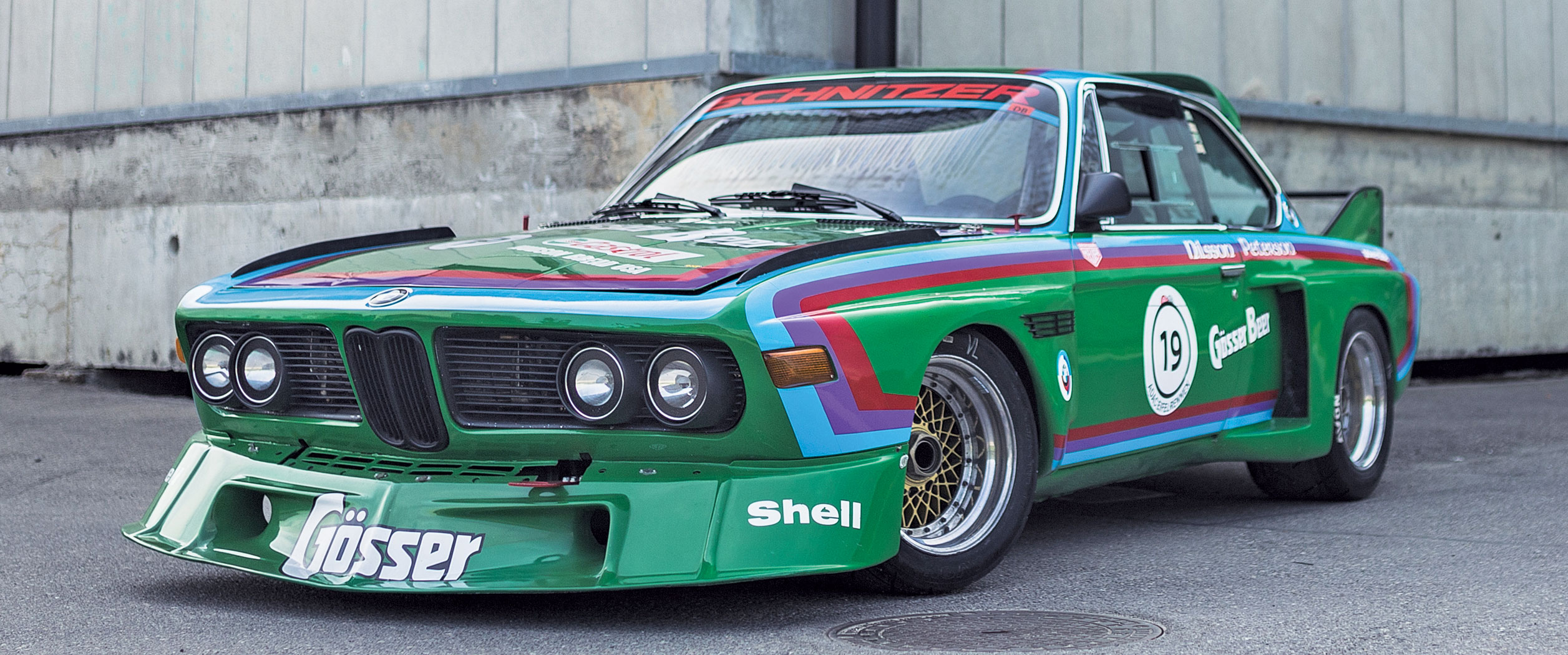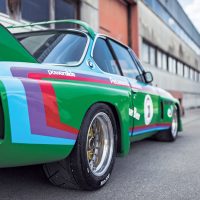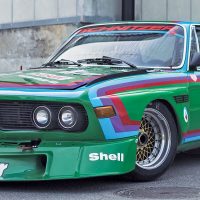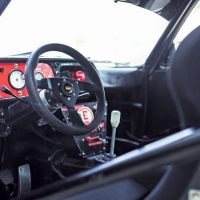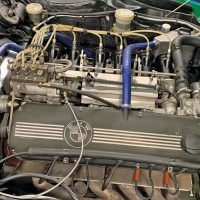SCM Analysis
Detailing
| Vehicle: | 1974 BMW 3.0 CSL |
| Years Produced: | 1972–75 (street CSL) |
| Number Produced: | 1,039 |
| SCM Valuation: | $128,000 (street CSL) |
| Chassis Number Location: | Tag and stamp on left side of engine compartment |
| Engine Number Location: | Stamped above starter |
| Club Info: | BMW CS Registry |
| Website: | https://bmwcsregistry.org |
| Alternatives: | 1973–74 Porsche RSR, 1974 Ford Capri RS 3100, 1974 Opel Commodore GS/E |
| Investment Grade: | B |
This car, Lot 407, sold for $174,759, including buyer’s premium, at RM Sotheby’s Online Only: The European Sale, from June 3 to 11, 2020.
I’ve often held forth about weapons versus collector values in old racing cars, and today we have the classic example. If our subject car really were the car it was painted up to look like, it would have been worth easily 10 times as much money.
But it isn’t, and it wasn’t. Herein lies our story.
In 1960, BMW was, candidly, in trouble. Their V8-powered luxury cars were getting old and had never sold well, and their 700 Series microcars were out of step with a much more affluent Europe.
Although their motorcycles sold well enough, BMW had not paid a dividend in 20 years. Fortunately, substantial new investment was available, and the company was restructured to create what was called the “BMW New Class” of sedans and coupes. This was the first all-new design produced at BMW since 1933, and it proved to be the basis for a very successful future.
A new, exceptional engine
BMW’s chief engineer, Alex von Falkenhausen, was put in charge of creating the new engine. He was insistent that BMW’s reputation for creating special cars be respected, so he designed an extremely strong five-main-bearing, 4-cylinder iron block with an overhead cam aluminum head. The engine proved so good that it remained in production for 20 years, and the block proved responsive to performance modifications. It was capable of handling 1,000 horsepower in a turbocharged Formula One application.
Building on success, the design was expanded to a 6-cylinder engine in 1968, with the intent being to power a larger car that would compete directly with Mercedes. It proved to be every bit as strong as the 4-cylinder engine — and remarkably vibration-free. The design team was greatly pleased when even rival Mercedes-Benz acknowledged at a meeting between company directors,”You have a good car, but we have a better car; the only thing you do better is the engine.”
The basic “New Six” was a three-box, 4-door sedan marketed in the United States as the “Bavaria,” which was followed almost immediately by a shortened, 2-door coupe designated the CS. It was technically a 4-seat car, although the wonderful Car and Driver observation about a similar car — that the rear seats were appropriate for two legless 8-year-old children — definitely applied.
From our standpoint, the important detail here is that as a 4-seater, it was designated a Touring Car rather than a GT, and as such, could race against Ford Capris and Opel Commodores in touring-car racing rather than chasing Porsche in the GT-oriented Manufacturers’ Championship.
Easing into racing
BMW had from its beginnings in the car business conceived of itself as a manufacturer of high-end performance cars that inevitably got raced, but the company had a very on-and-off attitude toward direct racing involvement. Having won both their class at Le Mans and overall in the 1940 Mille Miglia, the factory just didn’t have the money to try racing again until the 1960s, when it built a series of impressive pure racing engines for Formula and sports-racing competition. That was abandoned as not productive in late 1970, leaving only the production cars to carry the BMW performance banner.
Fortunately, the sporting competitiveness of the 4-cylinder 2002 had spawned a number of performance engineering companies, particularly Schnitzer Motorsport and Alpina, in the mid-1960s, and they were both capable and willing to work with the factory to create racing versions of the CS. In the early 1970s, BMW’s sales chief set up a separate company, BMW Motorsport GmbH, to handle the company’s racing ventures.
The CSL legend is born
Starting in 1970, the 2800 CS was raced extensively in the Touring Car wars, but by 1972 the writing was on the wall that the car needed to get lighter and more powerful. The FIA rules were very specific about what was considered “production,” so BMW built a run of homologation specials called CSL. They used thinner steel for the body and aluminum for the doors, roof, trunk and hood. They made the side windows out of plastic. By not using sound deadening and a lighter interior, they got the CSL down to about 2,650 pounds.
The other stuff that had to get legal were the bits that comprised the aero package. A front air dam, fender strakes, a diverter for the back of the roof, and of course, the rear wing, made the car actually work at racing speeds.
Interestingly, the rear wing wasn’t road legal in most of Europe, so the cars got delivered with the wing in the trunk. Unlike many homologation specials, the CSL was quite successful in its own right, with 1,039 produced. Nicknamed the “Batmobile,” they are very collectible today.
As well as being quite the road car, the CSL was exactly the weapon that Schnitzer and Alpina needed for the European Touring Car battles. They knocked another 300 pounds off the car and added more tire, bigger wings and so on as the rules evolved until 1976. Power improved as well, and by 1975, the 4-valve, twin-cam version was making over 450 horsepower. The CSL dominated European Touring Car for years, but after 1976 it was over.
With their wings, appendages, and wild paint schemes, they were glorious cars in a glorious time. The cars that actually raced for the factory and major teams are very desirable now, and they are worth anywhere from $1 million to over $2 million, depending on details of history and mechanical development.
I am told they are fabulous things to drive.
A wannabe 3.0 CSL
As mentioned at the beginning, this car is not a real racer, although it obviously pretends to be. It was built privately about 15 years ago and was raced in historic events for a few years before getting put away.
Except for an earlier, smaller rear wing, it is configured and painted just like the 1976 factory team Gösser Beer car, but it clearly doesn’t have that car’s trick internals (no four-valve engine, and it may or may not have aluminum body parts), so it won’t be nearly as fast. It has expired racing documents, so it was once considered to be race legal, but enforcement has gotten tougher, so I’m not sure it could get them again.
It is best thought of as simply a track toy.
With all that said, the car is very impressive-looking and undoubtedly a lot of fun to drive — close to if not quite the experience of a real team car. If you wanted to start fresh and build one, it would cost easily as much as buying this, so the value is there if you understand what you are getting.
It’s not real, but it wasn’t priced that way. I would say it was fairly bought. ♦
